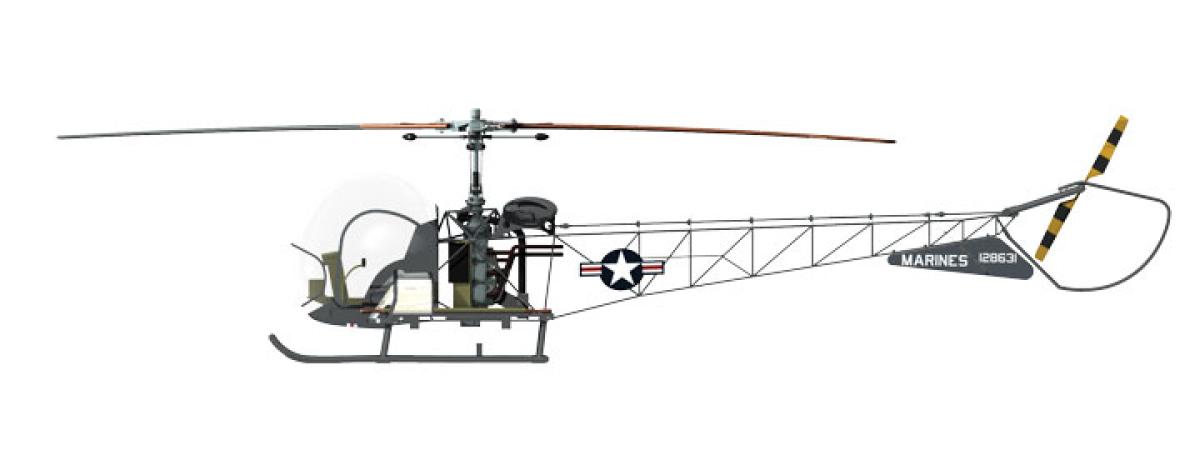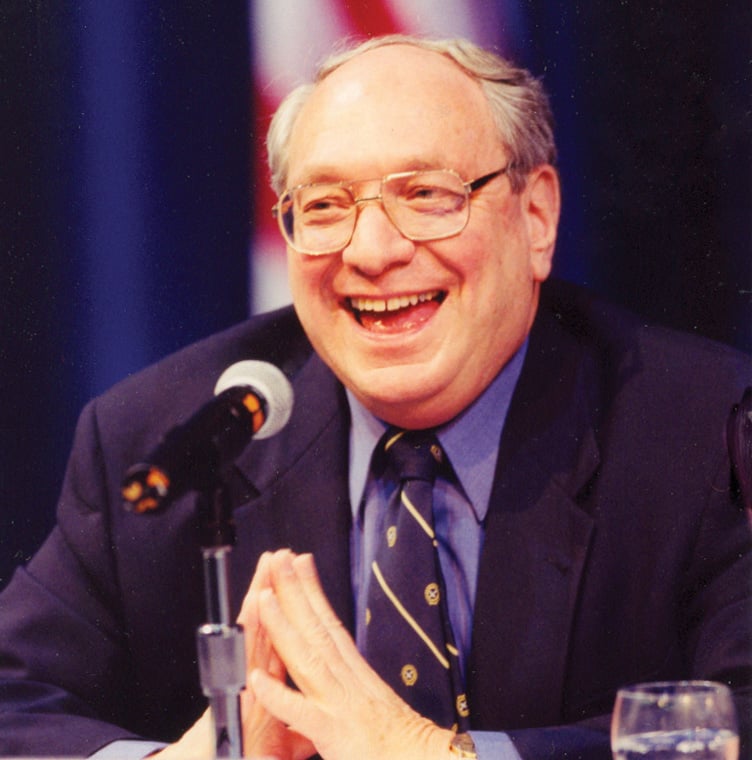Probably the world’s best-known helicopter is the Bell H-13—flown by the Navy as the HTL and HUL. Beginning with the feature film M*A*S*H in 1970 and in 256 episodes of the television series M*A*S*H from 1972 to 1983, U.S. Army H-13 helicopters were shown bringing in casualties to the (fictional) 4077th Mobile Army Surgical Hospital during the Korean War.1 Thus, millions of Americans and people around the world came to see and identify with the small, bubble-canopy whirlybird (and the TV series is still being shown in several countries, while the movie is available on Netflix).2
But the diminutive Bell helicopter far surpassed its photogenic qualities. The Bell prototype was first flown on 8 December 1945, and was the world’s first helicopter to be approved for commercial use. The helicopter was in production for more than two decades, with licensed production in Italy by Agusta, in Great Britain by Westland, and in Japan by Kawasaki. In all, more than 6,000 were made.
The military services of almost 40 countries flew it, as did scores of police and border-patrol agencies. In the United States the aircraft was flown by the Army, Navy, Air Force, Marine Corps, and Coast Guard. The helicopter became a “notable” aircraft when, on 12 July 1957, President Dwight D. Eisenhower became the first serving chief executive to fly in a helicopter. He used an Air Force H-13J model to travel from the presidential retreat at Camp David, Maryland, to his farm in Gettysburg, Pennsylvania. But after one flight in the three-passenger helicopter, the Secret Service forced the president to fly in larger helicopters. Subsequently, in September 1957 a Marine HUS-1 (UH-34) was used to transport President Eisenhower. (The role of providing helicopters for presidential transport was shared by the Air Force and Marine Corps until 1976, when the Marines exclusively were given that mission.)
The HTL/HUL was developed by Bell Helicopter with the company designation Model 47. The firm had previously produced several fighter aircraft: the XFM-1 Airacuda, a twin-engine fighter; the P-39 Airacobra and P-63 Kingcobra fighters that were used by several air forces in World War II; and the P-59A Airacomet, the first American jet fighter. The firm also produced the XS-1 (later X-1), the first aircraft to surpass the speed of sound.
The Model 47 helicopter had an advanced, simplified rotor system with a stabilizer bar, normally five feet long and weighted at both ends, mounted at a 90-degree angle to the rotor blades and attached to the rotor hub. This simplified controls and maintenance, and with only a two-blade main rotor, ground and shipboard handling were easier. The helicopter originally was produced with an enclosed cabin, but soon was altered to the distinctive bubble-type canopy. The open lattice tailboom, with an improved anti-torque rotor on the right side, became standard in 1949.
Most HTL/HUL/H-13 helicopters had a twin-skid landing gear with two small, retracing wheels for ground handling. Some variants were fitted with twin pontoons for shipboard and water operations. These were often seen on board Navy icebreakers. A stretcher pod could be fitted to each side of the cabin on the casualty-evacuation models.
A year after the Model 47 first flew, the Army procured a Bell Model 47 in December 1946 for evaluation. Designated YR-13 in military service, 18 of these helicopters were built for the Army and, beginning in February 1947, ten for the Navy. The Navy birds were designated HTL-1, indicating a training helicopter produced by Bell. (At the time the manufacturer letter “B” was assigned to Beech and Boeing aircraft.)
The success of the aircraft is evident by the Navy’s procurement:
- 10 HTL-1
- 12 HTL-2 (upgraded engine, bubble canopy)
- 9 HTL-3
- 46 HTL-4 (dual-control trainer)
- 36 HTL-5 (dual-control trainer)
- 48 HTL-6 (dual-control trainer)
- 18 HTL-7 (dual-control, all-weather trainer)
- 28 HUL-1 (utility variant; 1 crew plus 3 passengers)
Four of these HUL-1 variants were flown by the Coast Guard with the designation HUL-1G.
The British armed forces flew 50 Agusta-produced aircraft before accepting another 100 built by Westland; most of these were flown by the Army Air Corps. Subsequently, the three producers supplied thousands to other nations. These included an Agusta-built antisubmarine variant that carried a Mark 44 homing torpedo.
The U.S. Army, Navy, and Marine Corps made extensive use of the H-13/HTL in the Korean War. France armed its H-13s used in the French-Algerian War in the 1950s. Weapons were fitted on a test basis to U.S. models; especially popular were .30- and .50-caliber machine guns mounted on the twin skids.
In the late 1950s the H-13 was assigned the name Sioux in accord with the Army’s policy of naming helicopters for American Indian tribes. And in 1962, the helicopters (and most other U.S. military aircraft) were redesignated: All Navy HTL/HUL variants became H-13, with prefix letters indicating role—“T” for trainer, “H” for the Coast Guard aircraft, and “U” for utility, with suffix letters added for specific models.
Records vary, but the Navy apparently procured either 207 or 209 HTL/HUL helicopters, the last in June 1959. These “little birds” served with the sea services until June 1973 when, according to Navy records, the last, a UH-13P (formerly an HUL-1), was retired. Thus the aircraft had a long production run and a long service life—and possibly was flown by more nations than any other helicopter.
Editor’s note: Mr. Polmar’s first helicopter flight was in a Spanish Navy H-13 operating from the joint U.S.-Spanish base at Rota.
1. The film and TV series were based on the novel MASH: A Novel About Three Army Doctors by Richard Hooker (Pocket Books, 1968).
2. Bell 47-series helicopters also were featured in the television series Whirlybirds, a show intended for the juvenile market, airing from 1958 to 1962; some 40 of the shows were re-syndicated as Copter Patrol. Bell 47s also made cameo appearances in several movies, among them the classic The Bad and the Beautiful (1952), starring Kirk Douglas and Lana Turner.




